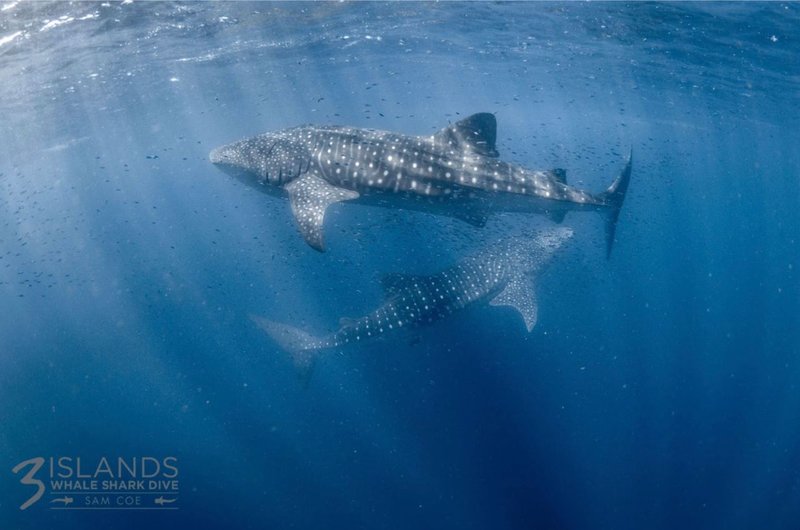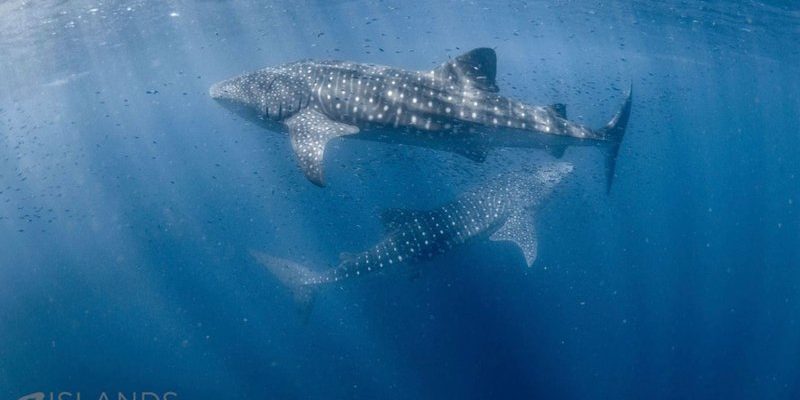
Whale sharks, the largest fish species in the world, can grow up to 40 feet long and weigh over 20 tons. Despite their size, they are filter feeders, munching on tiny plankton and small fish. But when it comes to reproduction, things get a bit more intricate than you’d expect. While we know some facts about their breeding habits, there’s still so much that remains a mystery. Let’s dive into the currents of their reproductive cycle and uncover how these gentle giants ensure the continuation of their species.
Whale Shark Breeding Overview
Whale shark breeding is much like a complex dance. These creatures exhibit internal fertilization, a method you might find surprising for such large fish. The males and females come together in reproductive aggregations during certain times of the year, usually in warmer waters where food is abundant. This is the time when you might spot multiple whale sharks congregating, seemingly enjoying a social gathering.
The actual courtship process can be a spectacle. Male whale sharks are known to “chase” females, sometimes engaging in playful behavior that looks almost like a game of tag. Here’s something interesting: males can be identified by their claspers, which are specialized organs used for transferring sperm. When the conditions are right, mating occurs, leading to a fascinating reproductive cycle.
Gestation and Birth
After mating, the female whale shark undergoes a process called gestation, which can be quite lengthy. This is where the real mystery kicks in—gestation periods in whale sharks can last anywhere from 10 to 16 months. Imagine carrying around a few hundred little ones for that long! Female whale sharks have been known to give birth to pups that range from about 20 to 30 inches in length.
You might be wondering how many pups a female has at once. Estimates suggest a single female can produce anywhere from 300 to over 800 pups in a single birthing event. That’s quite a family reunion packed into one moment! However, not all pups survive, as they face numerous threats in their early life stages, including predators and environmental changes.
Pups and Their Early Life
Once the pups are born, they’re pretty much on their own. Unlike mammals that provide breastfeeding, whale shark pups must quickly learn to fend for themselves. Luckily, they’re born in nursery areas, often located in shallow waters where they can find ample food and shelter. These areas are crucial for their survival, allowing them to grow without the immediate threat of larger predators.
During their early life, these young sharks feed on small organisms such as plankton, tiny fish, and crustaceans. They start at a size that’s relatively vulnerable, so the nursery areas provide a safe haven where they can develop. It’s incredible to think about: these tiny pups will eventually grow into the massive creatures that grace our oceans.
Mating Aggregations and Migration Patterns
If you’ve ever heard about the mating aggregations of whale sharks, you might be curious about where and when these gatherings happen. Typically, these events take place in specific locations known for their rich feeding grounds. Areas like the Yucatán Peninsula in Mexico or the Maldives are popular spots.
During these migrations, which can be quite extensive, whale sharks travel significant distances to reach these breeding hotspots. Sometimes, they cover hundreds or even thousands of miles! This long journey is a crucial part of their reproductive cycle. It’s almost as if the ocean is their map, guiding them toward their breeding destinations.
Threats to Whale Shark Reproduction
Unfortunately, the reproduction of whale sharks isn’t without its challenges. These gentle giants face numerous threats, primarily from human activities. Overfishing, habitat destruction, and climate change significantly impact their breeding grounds and nursery areas.
Additionally, their slow reproductive rate makes it harder for populations to bounce back from declines. Despite producing hundreds of pups, those numbers can’t replace losses caused by environmental stressors. Conservation efforts are essential to ensure these remarkable creatures have a future in our oceans.
Why Whale Shark Reproduction Matters
Understanding whale shark reproduction is crucial for several reasons. First, it helps us appreciate the complexity of marine ecosystems. Each part of the cycle is interconnected, and if one part falters, it can affect the entire system.
Moreover, awareness of their breeding habits can guide conservation policies. By protecting their habitats and reducing human impact, we can help ensure that these magnificent creatures continue to thrive. Whale sharks are not just magnificent ocean inhabitants; they play essential roles in maintaining the health of marine environments.
As we’ve explored the breeding and reproduction of the whale shark, it becomes clear that these creatures are much more than just their size. They tell a story of resilience and adaptation, moving through the ocean in search of mates and nurturing their young.
Every aspect of their reproductive cycle is a testament to their importance in the marine world. By learning about these gentle giants and advocating for their protection, we can help preserve their legacy for future generations. After all, the more we understand, the better we can protect the treasures of our oceans.

